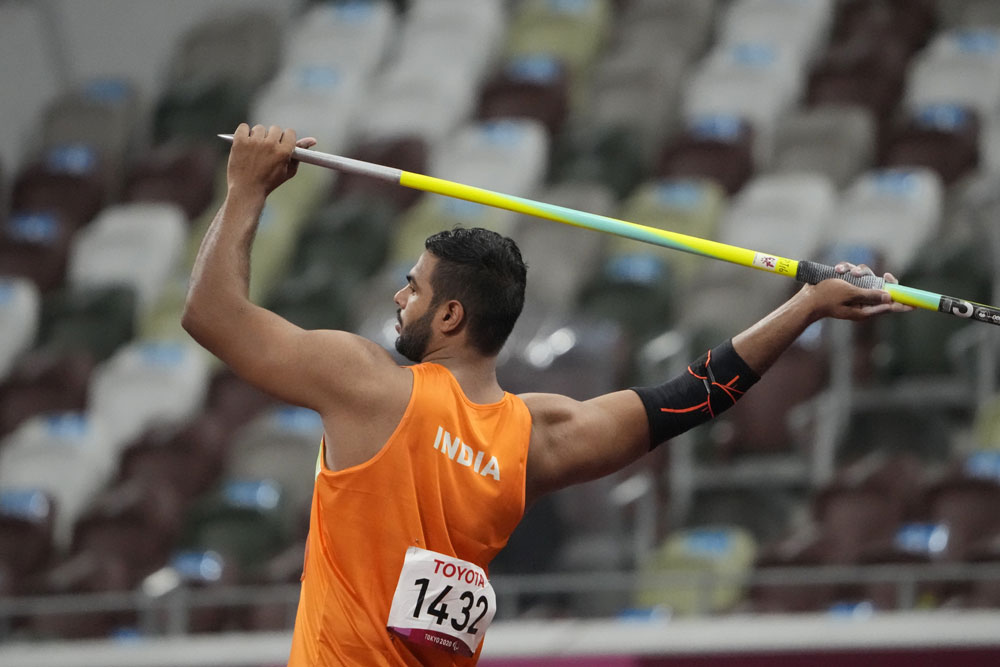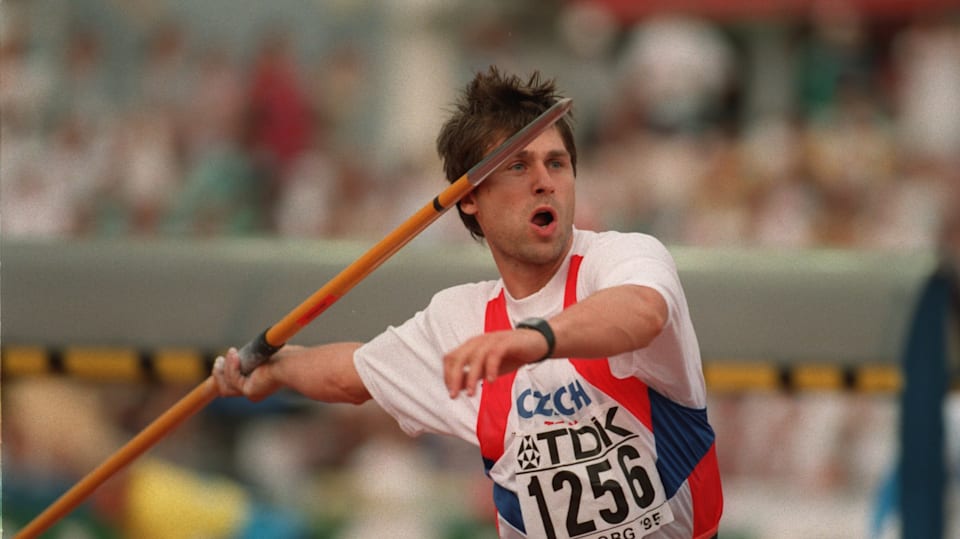History of the World Record Javelin Throw
/janzelezny-michaelsteele-56a827f83df78cf7729ca7aa.jpg)
The javelin throw is a track and field event that has been contested for centuries, with its origins tracing back to ancient Greece and Rome. The modern javelin throw, as we know it today, has undergone a remarkable evolution, with advancements in technique, equipment, and regulations contributing to its growth and the setting of new world records.
Evolution of Technique, World record javelin throw
The evolution of javelin throw technique has been a gradual process, driven by the pursuit of greater distance and efficiency. Early javelin throwers used a more underhand style, releasing the javelin from a low point. This technique, however, was limited in its potential for distance. In the early 20th century, the overhand throw technique emerged, revolutionizing the event. This new technique involved throwing the javelin from a higher point, allowing for a greater release angle and increased momentum.
The overhand throw technique further evolved throughout the 20th century, with athletes experimenting with different grip positions, footwork, and body mechanics. The focus shifted from simply throwing the javelin as far as possible to maximizing efficiency and minimizing wasted energy. Today, javelin throwers use a highly specialized technique that involves a powerful run-up, a precise release point, and a controlled follow-through.
Timeline of World Record Breakthroughs
- 1912: Finnish athlete Jonni Myyrä set the first official world record with a throw of 62.32 meters. Myyrä’s record stood for over a decade, highlighting the early stages of the event’s development.
- 1921: Another Finnish athlete, Matti Järvinen, broke Myyrä’s record with a throw of 66.10 meters, marking a significant leap forward in the event’s history. Järvinen’s record stood for almost two decades, showcasing the dominance of Finnish athletes in the early years of the javelin throw.
- 1939: The Finnish athlete Yrjö Nikkanen broke Järvinen’s record with a throw of 71.26 meters, establishing a new benchmark for the event. Nikkanen’s record remained unbroken for 14 years, highlighting the difficulty of surpassing the previous world records.
- 1953: The Finnish athlete, Pentti Keränen, broke Nikkanen’s record with a throw of 76.81 meters, demonstrating the continuous progress being made in the event. Keränen’s record stood for just over a year, indicating the increasing competitiveness of the javelin throw.
- 1954: The Soviet athlete, Janusz Sidło, broke Keränen’s record with a throw of 78.68 meters, showcasing the emergence of new competitors from outside Finland. Sidło’s record stood for over a decade, highlighting the global nature of the event.
- 1968: The Finnish athlete, Jorma Kinnunen, broke Sidło’s record with a throw of 85.71 meters, marking a significant milestone in the event’s history. Kinnunen’s record stood for over a decade, demonstrating the continued progress being made in the event.
- 1984: The Soviet athlete, Uwe Hohn, broke Kinnunen’s record with a throw of 104.80 meters, setting a new world record that remains unbroken to this day. Hohn’s record is a testament to the advancements in technique, equipment, and training methods that have occurred in the javelin throw.
Impact of Technological Advancements
Technological advancements have played a significant role in the evolution of the javelin throw, particularly in the design of the javelin itself. Early javelins were made of wood, which limited their potential for distance and accuracy. The introduction of metal javelins in the mid-20th century revolutionized the event, allowing for greater weight, balance, and aerodynamic efficiency.
The design of the javelin has continued to evolve over time, with advancements in materials, manufacturing techniques, and aerodynamics contributing to improvements in performance. The introduction of lightweight materials, such as aluminum and fiberglass, has further enhanced the javelin’s flight characteristics.
The javelin’s center of gravity has also been shifted over time, allowing for a more stable and controlled flight. These changes have contributed to the significant increase in world record distances seen in recent decades.
Anatomy of a World Record Throw
A world record javelin throw is a culmination of power, precision, and technique. It’s not just about brute strength; it’s about harnessing the body’s biomechanics to maximize distance. This section delves into the key elements that contribute to a successful throw, analyzing the interplay of forces, angles, and athleticism.
Biomechanics of a World Record Throw
The javelin throw is a complex movement that involves multiple muscle groups working in coordination. It starts with a powerful run-up, transitioning into a controlled throwing motion, culminating in a precise release.
The throw can be broken down into distinct phases:
* Run-up: This phase generates momentum and kinetic energy. The athlete accelerates, building speed and power, which are transferred to the javelin.
* Plant: The athlete plants their foot, transferring the momentum from the run-up to the throwing arm.
* Throw: This is the core of the throw, where the athlete utilizes the gathered momentum to propel the javelin forward.
* Release: The final phase, where the athlete releases the javelin with optimal angle and velocity for maximum distance.
Factors Contributing to a Long Throw
Several factors contribute to a long throw, including:
* Release Angle: The angle at which the javelin leaves the athlete’s hand significantly impacts its trajectory. The optimal release angle is typically between 30 and 45 degrees. A higher angle will result in a shorter throw, while a lower angle will cause the javelin to hit the ground before reaching its full potential.
* Release Speed: The speed at which the javelin is released is directly proportional to its distance. A faster release translates to a longer throw, given that the javelin has more time to travel through the air.
* Javelin Spin: A stable spin imparted to the javelin during release helps it maintain its trajectory and reduce air resistance. This spin is achieved by a slight twist of the wrist during release.
Physical and Mental Attributes
World-class javelin throwers possess a unique combination of physical and mental attributes:
* Strength and Power: The throw demands immense strength and power, particularly in the legs, core, and throwing arm.
* Flexibility and Mobility: The throw requires flexibility and mobility to maintain proper form and control throughout the movement.
* Coordination and Balance: A javelin thrower needs exceptional coordination and balance to control the javelin and maintain stability during the throw.
* Mental Focus and Concentration: The throw requires intense mental focus and concentration to execute the complex movements flawlessly.
“A world record javelin throw is a symphony of biomechanics, technique, and mental fortitude. It’s a testament to the human body’s potential and the dedication required to achieve greatness.”
The Future of the World Record Javelin Throw

The world record in javelin throw has been steadily increasing over the years, and it’s likely to continue doing so. With advancements in technology, training methods, and athleticism, we can expect to see even further distances achieved in the future.
Factors Influencing Future World Records
The future of the world record in javelin throw will be influenced by a variety of factors.
- Technological advancements in javelin design and materials could lead to improved aerodynamics and stability, resulting in longer throws. For example, the development of new composite materials, like carbon fiber, has already led to lighter and more durable javelins, allowing athletes to throw them further.
- Improved training methods, including biomechanics analysis and strength and conditioning programs, could help athletes optimize their throwing techniques and increase their power output.
- Increased athleticism, as athletes continue to push the boundaries of human performance, will play a significant role in achieving greater distances.
- Changes in rules and regulations, such as modifications to the javelin’s design or the competition format, could also influence the future of the world record.
Potential World Record Breakers
It is difficult to predict exactly who will break the world record in javelin throw, but several athletes have the potential to achieve this feat.
- Anderson Peters, the current world record holder, has shown remarkable consistency and power in his throws, making him a strong contender to break his own record.
- Johannes Vetter, a German javelin thrower, has consistently thrown over 90 meters and has the potential to challenge Peters’ record.
- Jakub Vadlejch, another Czech javelin thrower, has consistently thrown over 88 meters and has shown steady improvement, making him a potential world record breaker.
Predicting Future Trends
Based on current trends and advancements, it is reasonable to predict that the world record in javelin throw will continue to be broken in the coming years.
- Increased focus on biomechanics: As athletes and coaches delve deeper into the science of javelin throw, we can expect to see more sophisticated training methods that optimize throwing technique and maximize power output. This could lead to significant improvements in throwing distances.
- Technological innovations: Continued research and development in javelin design and materials will likely lead to even lighter, more aerodynamic, and stable javelins. This could further increase the potential for longer throws.
- Greater athleticism: As athletes continue to push the boundaries of human performance, we can expect to see increased strength, power, and coordination among javelin throwers. This will contribute to achieving greater distances.
The world record javelin throw is a feat of incredible strength and precision, a testament to years of dedication and athletic prowess. It’s a moment of pure adrenaline, a release of raw power that leaves spectators breathless. While the record itself is impressive, it’s also fascinating to see how these athletes manage their personal lives, like Hunter Schafer’s boyfriend , who undoubtedly provides support and inspiration.
But back to the javelin, the next time you see an athlete launch that spear, remember the dedication and passion that goes into every throw, and the incredible power that they unleash.
Imagine the power and precision needed to break a world record javelin throw! It’s a feat that requires dedication, skill, and a whole lot of strength. But, you know what else takes dedication and skill? The collaborative journey of Diana Silvers and Dominic Fike , a pairing that’s definitely worth checking out.
Just like a javelin thrower aiming for the perfect trajectory, they’ve combined their talents to create something truly unique. So, whether you’re fascinated by the power of athletic achievement or the creativity of collaboration, there’s something inspiring to be found in both!

